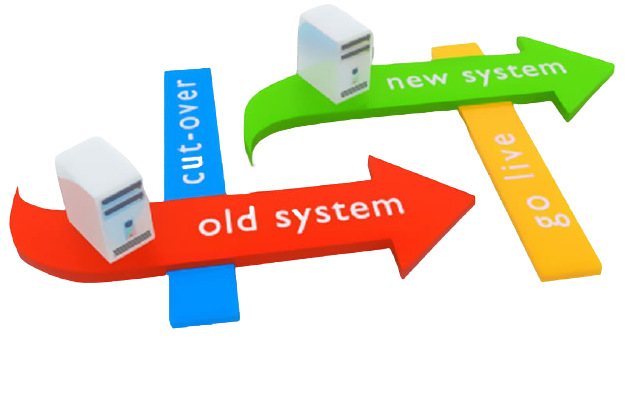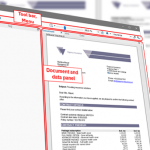Why Architecture is of Strategic Importance for CCM!
Whether you’re looking to build a house, implement a software system, or take on the digitalization of your business, you’ve probably questioned whether you should talk to an architect. Good architecture lowers construction and life-cycle costs and improves productivity, functionality & efficiency. It protects your investment in the long run. Customer Communication is of strategic importance to your business. Without business documents such as:
- invoices , bills, reminders, there is no cash flow.
- contracts, there is no legally binding relationship.
- statements, there is no financial transparency and trust
- response letters, there is no bi-directional communication
- marketing, there is no business growth.
Customer Communication is for the long run, therefore, it deserves a good architecture. At Papyrus Software, our principle was, and still is, to build software on good architecture to protect our customer’s investment as is explained in this Message of the CEO. We are proud that after 34 years, we still provide backward and upward compatibility for our customers and provide them with a seamless way towards an omnichannel world, protecting their investments in their document applications.
CCM Defined
According to Gartner,
“CCM technology supports the creation, management, and distribution of B2C or B2B customer communications. CCM applications create personalized, on-demand communications that support multi-experience distribution, often based on the recipient’s preferences, rather than the senders. CCM solutions are primarily used in industries like insurance, banking, healthcare, and utilities to generate documents such as invoices, statements, correspondence, alerts/notifications, and marketing communications. These communications are often highly regulated and contain personally identifiable information (PII) such as account numbers, financial data, or health information. As a result, these systems provide a level of governance, auditing, and data security that is not always necessary in marketing-based communication platforms”.
In my own words, I explain CCM as the art of transforming structured data (any format and code-page) coming from a wide variety of applications into human understandable communication by putting it in context of text, columns, tables, charts and to deliver it to the communication channel of choice as document, email or message.
CCM Version incompatibility
Some of you may remember the not-compatible versions of DOC1 V3 and V4, or different not-compatible versions of Exstream. The responsible managers at that time decided to postpone or not migrate, and choose the easy way forward, deciding to implement newer versions of the software for future documents. This short-term thinking left many successors with a headache. Cost kept going up, changes took longer, product support was fading, and it became nearly impossible to keep up with the fast-changing world with its new output formats and channels.
CCM Vendor acquisition and mergers
CCM mastodons from the past, such as Document Sciences xPression, Exstream Software, Streamserve, Group1 DOC1, GMC Inspire, and recently Icon Systemhaus DOPIX were bought by Investment companies or their competitors. Those buyers ended up with a portfolio of different products, built with different technologies, not sharing a common architecture nor vision. The marketing department of those buyers did their job. They rebranded products, merged websites and put out promising press releases. Their main objective? Marketshare and shareholder value. The cost went up, as the synergy between products that do not share a common architecture is hard to accomplish. Product portfolio rationalization, meaning the end-of-life of different acquired products becomes a fact. Forcing customers to migrate or leave, not caring about the strategic importance of CCM for your business and the investments you have done, and the risk associated with it.
CCM Use case scenarios
Good architecture also takes care of different use-case scenarios. Customer Communication comes in different variants. There is the high-volume batch, where we can distinguish between data placement on forms and dynamic formatting for more text-oriented documents. Then there is the online one-by-one document request and the interactive letter-writing scenario where business users can modify text and parts of the document using word processing functionality and the wizard style document creation where data is manually filled in or API retrieved.
CCM Communication channels added
With the rise of the Internet, we have seen different communication channels being added. While print and mail are still very important, although costly, other communication channels such as email, and web portals where customers can download their documents as PDF (PDF/UA standard for accessible PDF), or view them as HTML became mainstream. Messaging such as SMS, Notifications, and social Chat apps are as well part of the mix.
CCM Point solutions
Many vendors jumped on this bandwagon and created point solutions, for example interactive letter-writing using Microsoft Word. Many companies bought and implemented such a solution without taking into account the overall CCM Architecture, as it often goes with point solutions that are being deployed at one specific department as they have the first need, and it often stays with that, having another department using their own point solution.
For example, customers who implemented Microsoft Word based solutions, started to face similar issues as in the past. Microsoft released a new version of MS Word, and a huge investment had to be done by the company in upgrading the CCM product as the Word based templates, and likely there was an uptick in licensing costs from Microsoft as well. Often, point solutions suffer from not realistic expectation when it comes to scalability and performance. Ever tried to run a batch job producing thousands or millions of documents using Microsoft Word or using an XML & XSLT-based document composition engine?
Other point solutions we often encounter at customers are each solving specific topics such as additional output channels, post-processing and mail optimization, email marketing, or converters for PDF optimization or PDF/UA, print output converters for different print formats, mobile, document archives, etc.
It’s no surprise that over the years we have seen the rise and fall of many such vendors, but let us not forget the custom developed solutions we see in most organizations as well. What seemed, at first sight, a quick win, became soon another dependency with its own complexity to manage. For example, how to ensure the delivery of a document when the preferred channel is email but the email bounces or is never opened?
CCM Replatforming
We have seen the last 35 years a major transition from Mainframe and Midrange to Server (Windows, Unix, Linux) to Virtualization and Cloud based Infrastructures. In reality, most of our customers using all the hardware and Os variants and expect their CCM solution to run on those infrastructures and work with data formats that are common for applications on it. For the data this means support for both EBCDIC and ASCII in different code-pages, fixed length, separated, XML, JSON and any new format that will be invented in the future.
A well architected CCM Solution protects investments in business communication as well hardware and applications. It is not intrusive as it does not require existing applications to change the data types and file structure, as this would cause additional risk and cost.
CCM Migration projects
We get increasingly more requests to consolidate and migrate existing (legacy) document applications to the Papyrus platform. Many of the reasons are listed above.
The truth is that there is no magic, and one-to-one (automated) migrations are not easy to achieve or not even desirable. The complexity started when exceptions were duplicated rather than standardized and migrations were postponed. It’s even more complex due to the fact that the knowledge about those applications is not accessible anymore. Data structures must be understood and business logic in existing documents must be identified, analyzed, and verified. The document itself has to be modularized into reusable building blocks (text clauses, tables, charts) to fully reap the benefits of a migration into the Papyrus platform. This requires partnership and teamwork between customer and vendor to make it a success and to be ready for the future.
Check out the blog post Migrating Documents to Papyrus: Best Practices by Means of Dopix and IBM’s ASF/DCF.

Senior Executive at Papyrus Software






